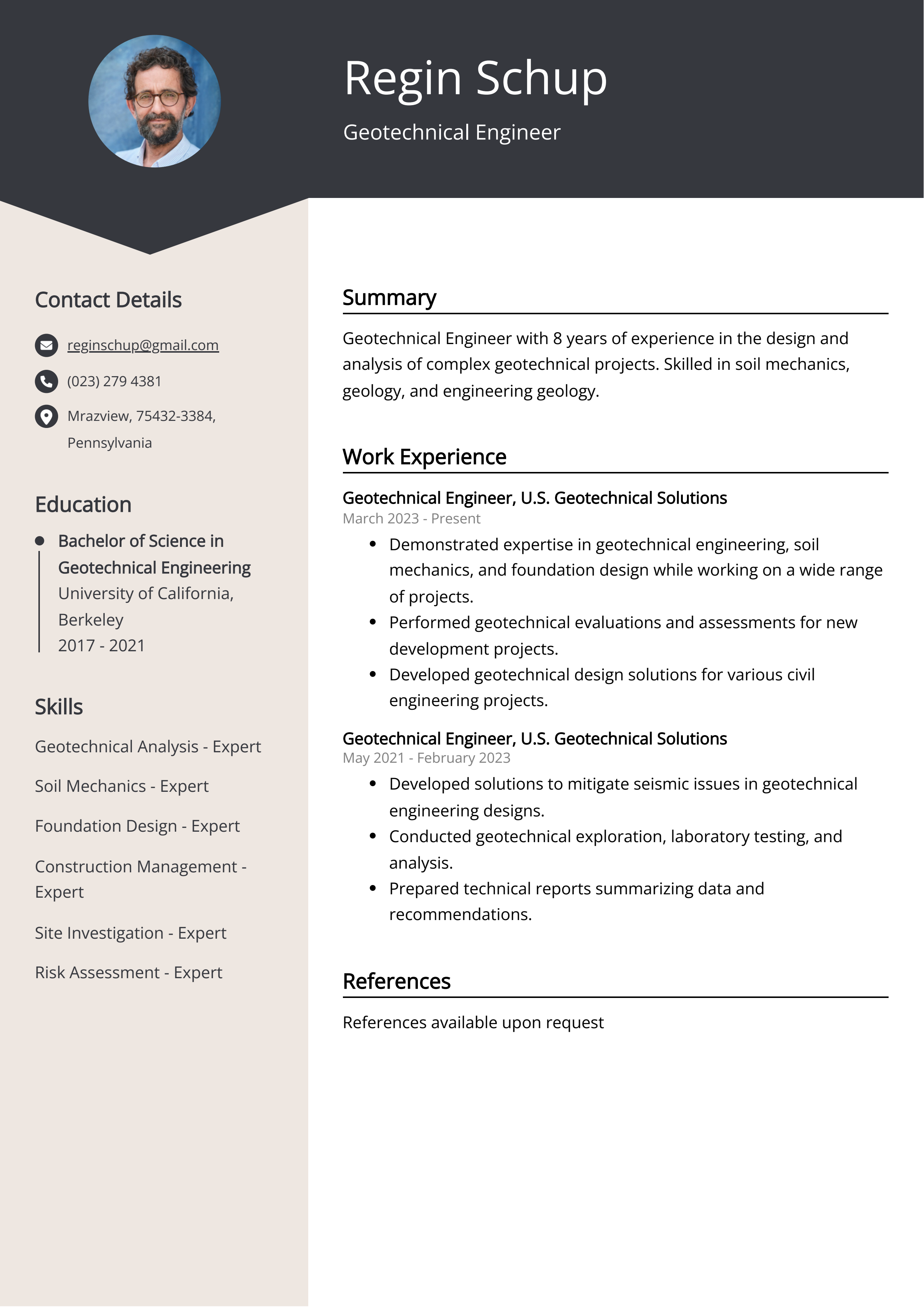The Main Principles Of Geotheta
The Main Principles Of Geotheta
Blog Article
The Main Principles Of Geotheta
Table of ContentsGeotheta - The FactsSome Known Details About Geotheta Geotheta Can Be Fun For AnyoneThe smart Trick of Geotheta That Nobody is Discussing
They collaborate with civil engineers, architectural designers, engineers, and other specialists to incorporate geotechnical considerations into the total job style and building process. This calls for reliable team effort, sychronisation, and communication to make sure that the geotechnical facets line up with the job goals and meet governing demands.Mining & Products Engineering: Concepts of drilling, penetration prices, and factors influencing the option of drilling technique. Blasting methods in surface and below ground functions. Mechanical and constant methods to fragmentation, including longwall shearing and fullface boring.
Modelling of fragment and fragment dimension circulations; comminution as a transfer function. Comminution innovation: squashing, grinding, size category. Integrated analysis of fragmentation and comminution procedures. Used by: Mining & Materials Design.
The Main Principles Of Geotheta
Bachelor's degree programs in civil, geotechnical, geological, and ecological design commonly last four years and include basic education and learning training courses in English, social science, and the liberal arts, in addition to training courses in sophisticated mathematics, structural geology, and liquid mineralogy. (https://medium.com/@ianhammond2191/about)
Geotechnical engineering involves the assessment of the dirt and rock conditions at a specific website, and their ramifications for the development of that site. As many frameworks count on the ground for assistance, it is without surprise that a detailed understanding of the ground conditions, and the suitability of structure systems, are vital to the long-term stability and efficiency of the structure or framework.
Specialising in the examination of geological developments and ground behavior, geotechnical designers carry out scientific examinations and screening to comprehend the effect these geological developments might carry the style and building and construction of structure, civil and facilities tasks. This knowledge is critical for the layout and construction of buildings, roads, passages, dams, bridges, and water supply and sewer systems.
The geotechnical team at Douglas Allies regularly speak with architects, layout engineers, designers, and contractors to make suggestions on style and growth propositions to make certain that the developed frameworks are appropriately designed for the ground conditions. For instance, the design of footing systems needs to take into consideration the weight of the framework, the capacity of the ground to sustain that weight along with activity resistances and effective construction.
The Best Guide To Geotheta
This job is considerably streamlined by the use of our Douglas Map geospatial system which makes this details easily available in a simple to use internet internet browser interface. A geotechnical engineer will certainly direct the boring of boreholes and examination pits to collect soil and various other examples, and also analyze surface functions and ground direct exposures to form a geotechnical design of the subsurface problems.
Depending upon the task kind and ground conditions experienced, laboratory screening may to name a few things examine stamina, compressibility, reactivity and/or permeability of soil and rock samples. After this data is accumulated and collated, the results are used for a geotechnical model of the site, which is generally offered as areas across the website.

A geotechnical examination naturally can just examine the ground problems at the places drilled or dug deep into. All-natural variations in soil and rock problems can take place across a site and in between examination areas. It is for that reason excellent her comment is here method that the geotechnical designer be maintained throughout building of the task to supply on-site verification that the ground problems run into are consistent with the assumptions and advice given in the geotechnical investigation record.
5 Easy Facts About Geotheta Described
Geotechnical engineers use their thorough expertise of soil and rock to assess threat and solve problems on diverse infrastructure projectsGeotechnical engineering is a specialist branch of civil engineering which takes a look at the practices of planet products and the application of dirt and rock mechanics. Tailings Engineer. As a geotechnical engineer, you will evaluate the physical, mechanical and chemical properties of soil and rock in order to develop structures, preserving structures and earthworks
Geotechnical engineering is carefully linked to and overlaps with, both engineering geology and ground engineering - https://soundcloud.com/geotheta. It's feasible to specialise in geotechnics or help a geotechnical business but be referred to as an engineering geologist or a ground designer. As a geotechnical engineer, you'll need to: construct and keep relationships with clients and other professionals entailed in the website, throughout each projectmaintain safety standards on website be mindful of price effects when you make recommendationsstudy geological maps and aerial photographs from a range of resources and from various time periodsexamine construction intends to see how viable they are based on your understanding of the siteinvestigate threats or geological dangers for the sitesearch for ecologically sensitive features, such as landfill beginning to establish factual and expository ground modelsplan field investigationsdrill and evaluate samples of bedrock, soil, groundwater and additional materials oversee various other experts on sitesolve technological problems as they emerge, such as unforeseen frameworks at drill sitesmonitor conditions during and after construction to make certain structures are secure in the brief and long termadding data gathered on site to your preliminary researchcreating geotechnical estimations, illustrations, and two or three-dimensional computer system models translating the datamaking recommendations about the recommended use of the site

Report this page